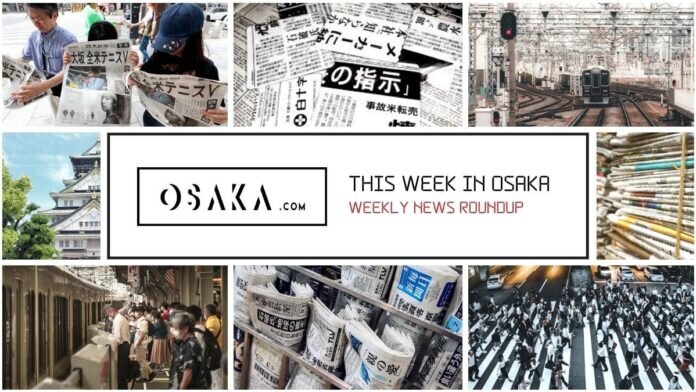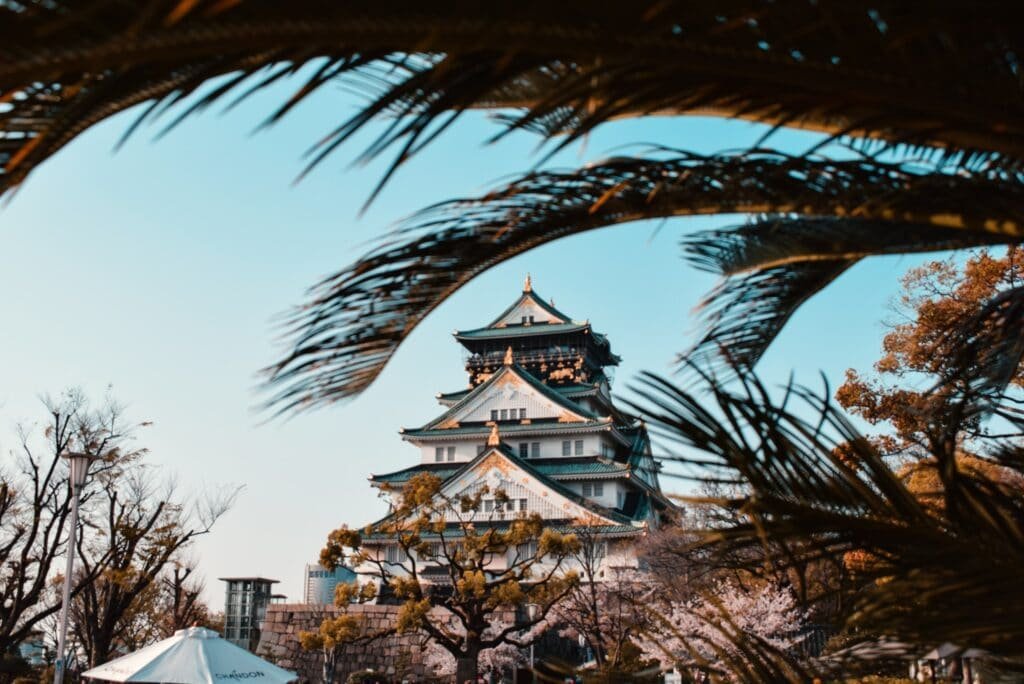
Each week, here at Osaka.com, we bring you a selection of some of the top stories about Osaka making the local and national news here in Japan. Sometimes it’s serious, sometimes it’s funny, but it’s always direct to you, from Osaka.
Here’s a look at some of the stories hitting the headlines in Osaka this week.
Osaka Has Highest Covid Deaths Count

Osaka Prefecture achieved a grim accolade this week. Osaka officially surpassed Tokyo to become the prefecture with the highest number of cumulative Covid Deaths.
At the time of writing, Osaka has 769 recorded Covid deaths. Tokyo, despite having higher numbers of infections and patients in a severe condition, currently has 741 recorded Covid deaths. Despite the higher mortality rate, Osaka has fewer than half the number of recorded infections as Tokyo. Presently there are almost 88,000 recorded positive tests for Covid-19 in Tokyo. Osaka sits at just over 39,000
Currently, experts cannot offer a conclusive explanation for this statistical anomaly. Various theories have come to the fore forward however. Most common among them is that Tokyo has a more active and readily available testing system. In Osaka, and indeed across much of Japan it is almost impossible to take a PCR test at a public health facility unless you show symptoms of Covid-19. You also need a referral to a testing center from a doctor. There is also the option of taking a test privately, however if you do so then it can cost up to 20,000 yen. This places such testing beyond the reach of many ordinary citizens.
Also, even if you can afford such a test, positive results from these private clinics do not always count towards the national total. Japan’s data protection laws prohibit the government from accessing the data of private businesses, such as medical clinics. So, it could be that Osaka has conducted less tests, but actually has a similar number of virus carriers to Tokyo.
Vaccine Approval Offers Hope to Prevent Covid Deaths

Becoming Japan’s deadliest prefecture for Covid-19 casts a dark shadow over Osaka this week. However, other news appears to offer us all some hope. Sources report that the first vaccine candidate to enter Japan’s approval process is almost ready to go. Local media reported this week that the Pfizer/BioNTech vaccine will be approved for use on February 15th. This raises hopes that the roll-out of the vaccine across Japan can begin slightly ahead of the intended schedule of “the end of February”. Japan’s vaccine plan differs slightly from that of other countries.
First to be immunized will be frontline medical staff and first responders dealing directly with Covid patients in late February. Next will be senior citizens over 65 years old, starting in March, with people in “at risk” groups following soon after. On Wednesday of this week, a government source claimed that the general public could gain access to the vaccine as soon as May. However, this was later denied by Taro Kono, the minister in charge of Japan’s vaccination program.
Under a previously agreed deal, Japan has an agreement with Pfizer to supply enough vaccines for 60 million people within the first 6 months of 2021. This 60 million figure would be enough to cover all of those most at risk. It will still be short however, of the 70% of the population required to be vaccinated to achieve “herd immunity”. Vaccine skepticism amongst many in Japan is also a hurdle that needs to be overcome. At present, about 30% of Japan’s population remain unconvinced the vaccine is safe. Ultimately, unless the population gets behind vaccination, the number of Covid Deaths will only increase further.
JR West Staff Given Extra Leave as SOE Takes Hold

After Osaka declared a new state of emergency last week, citizens were asked to refrain from any non-essential travel. As a result, train footfall dropped, particularly on the weekends. In response to this, JR West, which runs both rail and shinkansen services in the Kansai area, announced that it would give staff extra leave. Similar measures were put in place during the first state of emergency last spring, when stay at home orders led to greatly reduced commuter numbers.
Last year, about 18,000 staff were affected by this measure. This time around, that number will increase to 27,000. The initiative will run until at least February 8th and could be extended if the state of emergency is also extended. Around 1,000 staff per day will take leave from work under this new scheme.
And Finally…

Our friends in America rely on a famous groundhog to predict the coming of an early spring. In Japan, however, we take a more scientific approach. This annual “Hanami” forecast, published this week, revealed that Osaka can expect an earlier spring than usual this year.
Hanami is the tradition of gathering with friends to eat, drink and be merry as you admire the beauty of the cherry blossom trees. These trees only bloom for a brief window of around 2-3 weeks, denoting the start of spring. This year’s forecast predicts Osaka’s cherry blossoms will bloom on March 24, around 10 days earlier than usual. After a long, harsh, and very cold winter, the promise of an early spring is certainly one many in Osaka will welcome. Over in the states, Punxsutawny Phil won’t make his proclamation until February 2nd.
That’s all for now but be sure to check back again same time next week for another round of this week in Osaka!

















